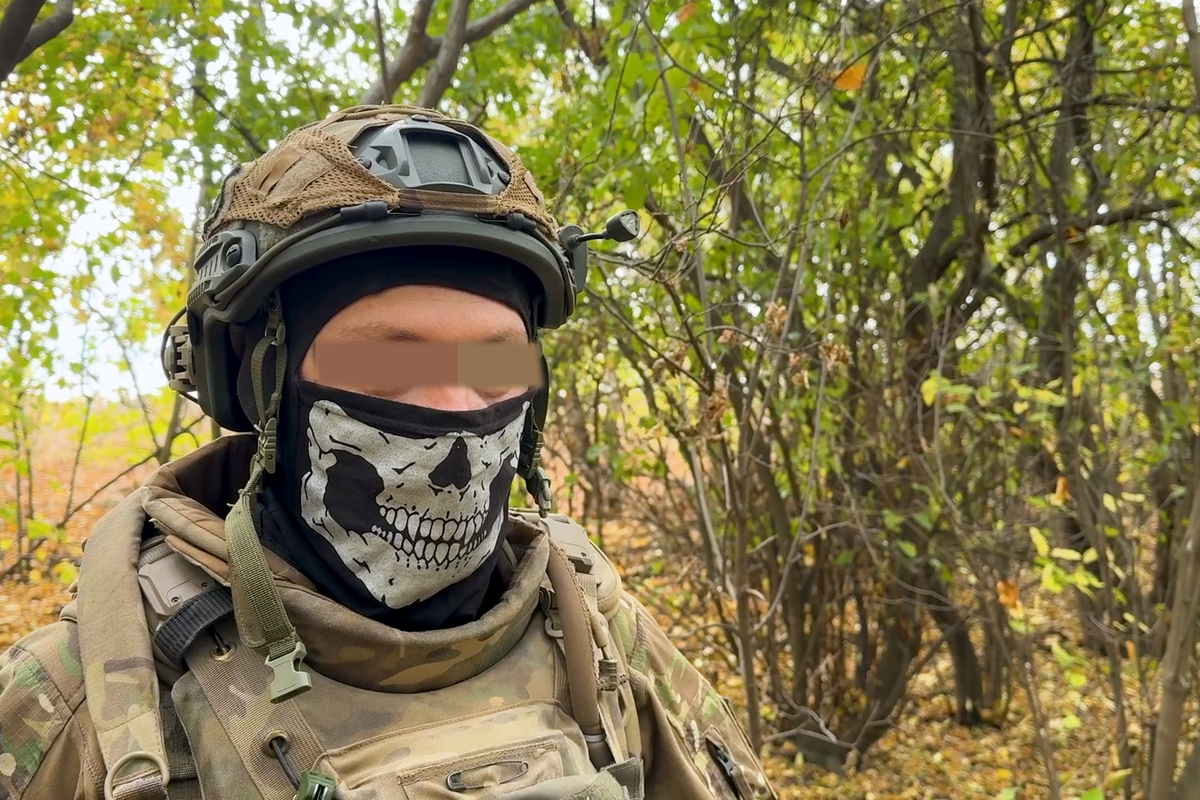Copyright independent

Working as an agent for Ukraine and attacking Russia’s railways was pretty easy, says Lazzy – a Russian fighting against his own country. “It’s not that complicated. Anyone in Russia can freely buy gasoline - for now, while some refineries still work - and set the railway on fire,” he explains. “Of course, you need to prepare the exit routes. To plan the operation, so to speak. You can’t just go for a walk and decide to do it… First, recon, then action. But in fact, anyone can do it.” The saboteur burned “several” railway switching and electrical systems in arson attacks in Russia’s Volga region. The truth, though, is that it was dangerous. And ate away at his nervous system. Which is why he walked across Russia’s border and joined Ukraine’s army to fight against Vladimir Putin. For the last year, he has been a frontline soldier battling in the shattered rubble of what is now known as the “dead zone”, because it’s so thinly populated by soldiers from both sides, all hiding from enemy drones – with occasional sneak attacks in person. “I think it's easier for me here. Because in Russia, I constantly felt fear for my life,” he says. “Here in Ukraine, FSB and GRU [secret service] networks are not so strong. In Russia, it's much more dangerous. Also, [in Russia] there are many people who support the regime. Say the wrong word and they will rat on you.” Lazzy chose to fight Putin’s regime because of what he saw as cronyism, corruption and the destruction of democracy: “Russia must have a future”. As he talks, his face is hidden and he’s known only by his military callsign. The Independent met him just a short drive from the front lines where he’s fighting in Ukraine’s south. “Here, in Ukraine, I can defend myself with weapons. Yes, it's scary on the positions. They want to kill you. But it's clear: either you or them.” He is part of Ukraine’s Freedom of Russia Legion, which operates under the control of Kyiv’s military intelligence services like other foreign volunteer units. The legion claims to field several hundred men. They are all Russians. In Moscow they would be executed as traitors. In Ukraine, they have fought in Sumy province, lost heavily in the bitter battle for Bakhmut, and say they have been involved in driving back recent Russian assaults on the front line of the southern battlefields. Ukraine has stepped up its campaign both inside occupied territory and in Russia itself. In its most spectacular strikes, Ukraine managed to disable Russian bombers in a covert Operation Spider involving multiple targets and agents on the ground. Russian refineries and power stations are regularly attacked by Ukraine’s new long-range drones. But the Freedom for Russia Legion has eyes on defending Ukraine locally. And then fighting in Russia to topple Putin altogether. The latter would be a welcomed by Kyiv but is not a stated aim. Ceasar, a veteran Russian fighter in Ukraine’s army, began his opposition against Putin with what he calls “terrorist attacks”. For at least the last three and a half years he has been in Ukraine’s army. He is driven by religious fervour and monarchist dreams of a return of a tsar to Russia. Originally from Sochi, he said he does not worry about killing fellow Russians. “I do not feel bad for killing my own citizens because they're doing very bad things here and I saw that how they killed civilians, how they raped, how they robbed and they want to destroy Ukraine. Putin has ruined not only Ukraine, he's ruined also my country,” he said. He is armed, like Lazzy, with a modern Mi16-type rifle, originally an American design. It is rapidly replacing the AK-47 in Ukraine’s armoury. Ceasar describes reality on the front lines of a war he has chosen to join. “There's not a lot of military personnel at the front like it was two or three years ago. We are all dispersed. We are now about two or three men, at most, sitting in a bunker. Because if we will put there a dozen men, they will be killed. “It's very dangerous to move in and move out. It's the most dangerous part of the operation.” Soldiers are forced to spend weeks, sometimes months, in foxholes and bunkers, trying to survive constant artillery and drone attacks. Referring to Lazzy, he continues: “On the last operation he was about 45 days on the position. I was about three weeks. It's really hard. “Every day, every time you dig in, dig in, dig in and again, dig in.” Over the last few weeks, Ukraine’s president Volodymr Zelensky has been touring the west seeking long range missiles and air defence systems. Putin has stepped up attacks on Ukraine’s infrastructure, focusing on energy and transport systems ahead of the winter freeze. Russian troops have also advanced in small bounds at huge cost east of Kharkiv and already committed murder in Pokrovsk against local civilians left behind by Ukrainian withdrawal. But drone warfare has kept the Russians back. Ukraine’s problem is that drones cannot fly in high winds, rain, fog or when it is snowing. Putin’s forces are likely to exploit bad winter weather and attempt to break through Ukrainian lines when drones are grounded. That is when Lazzy and Ceasar will face their toughest test.



